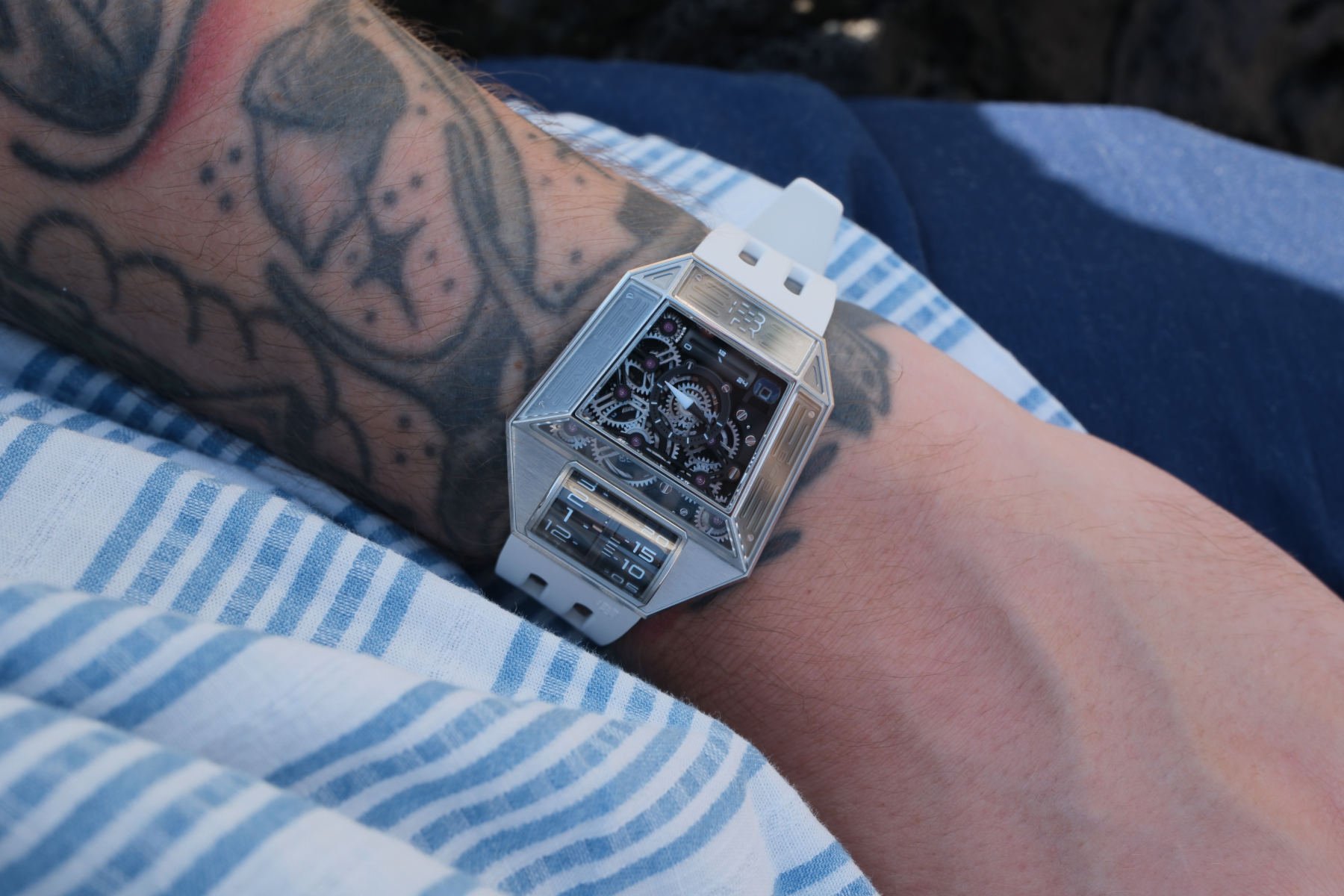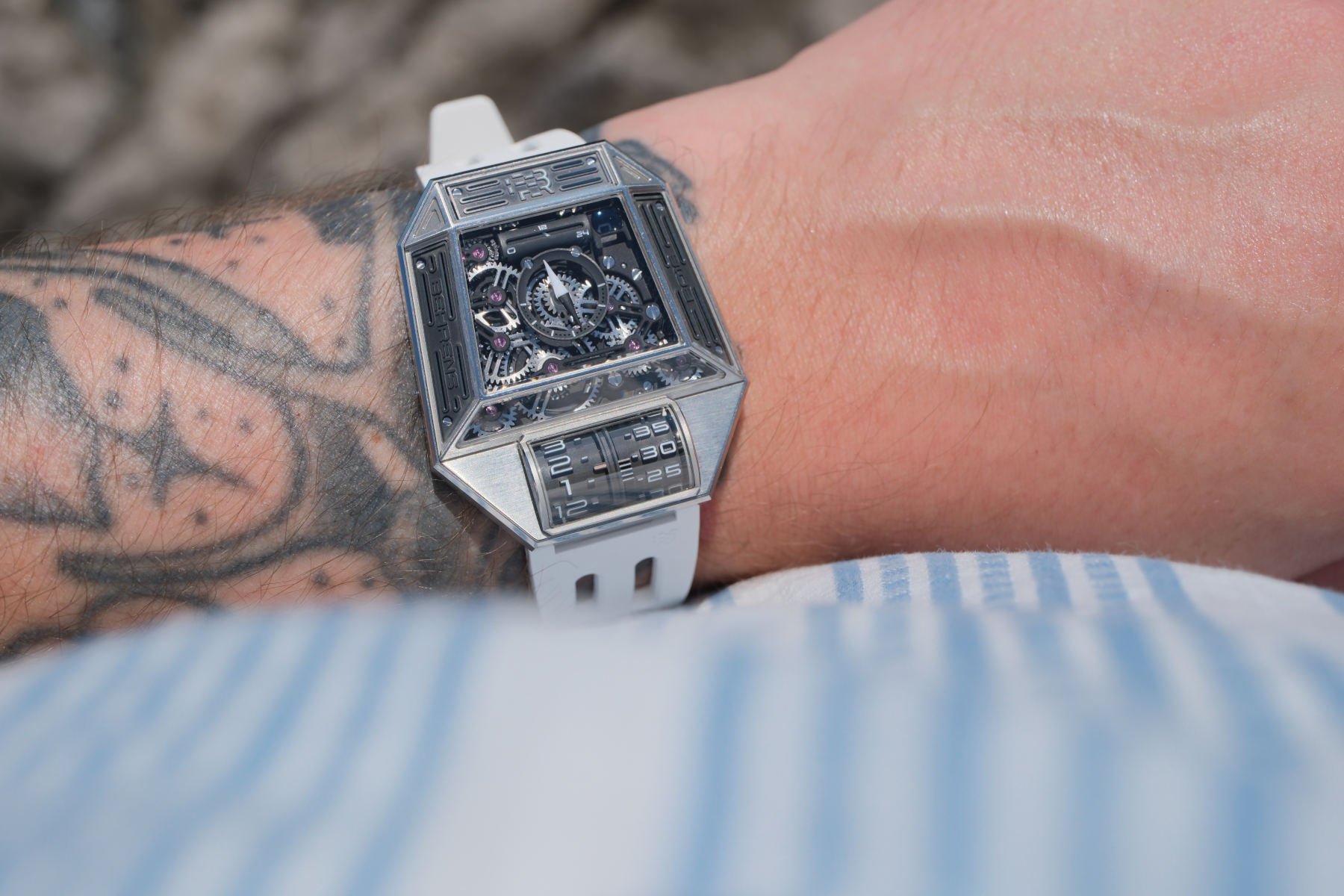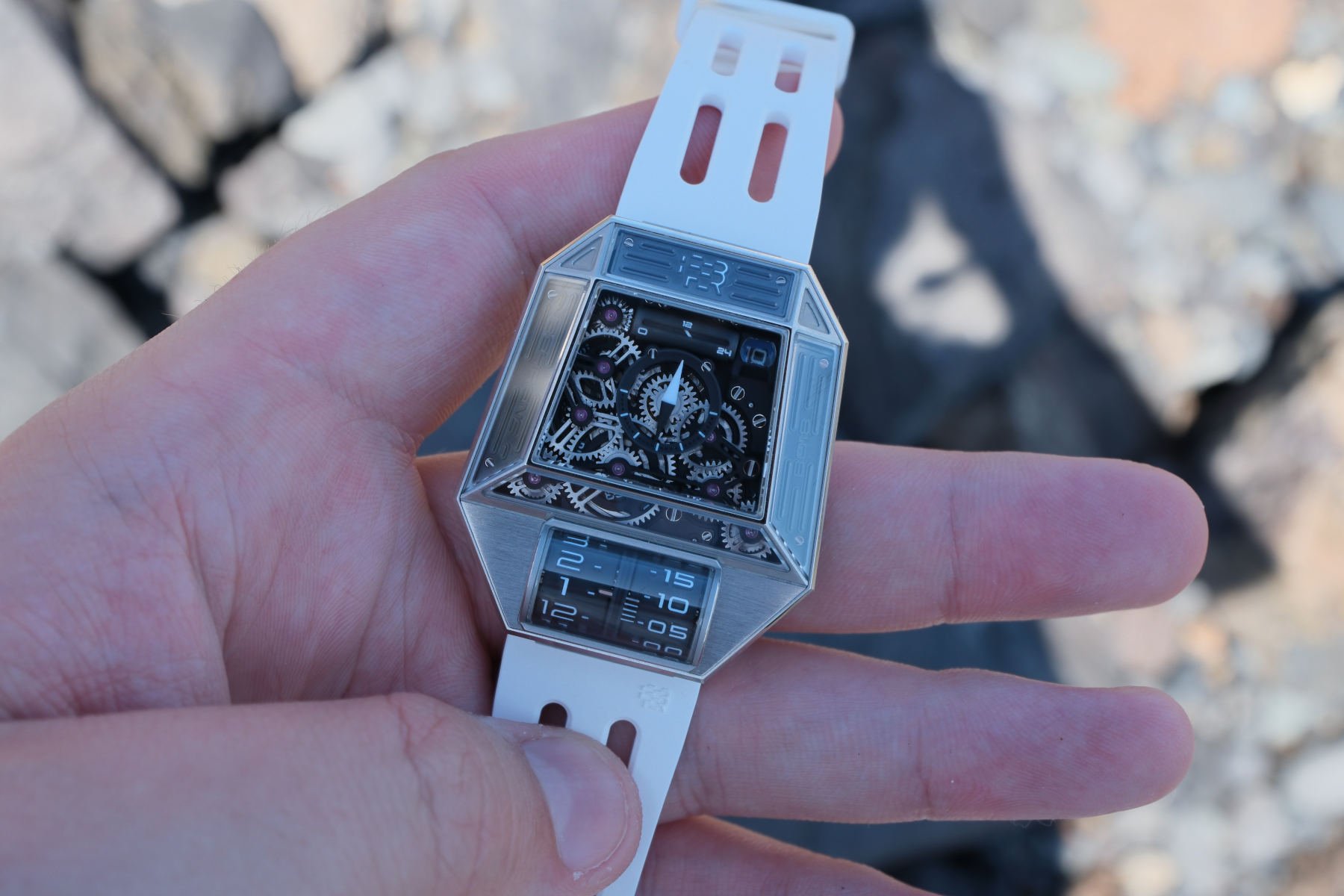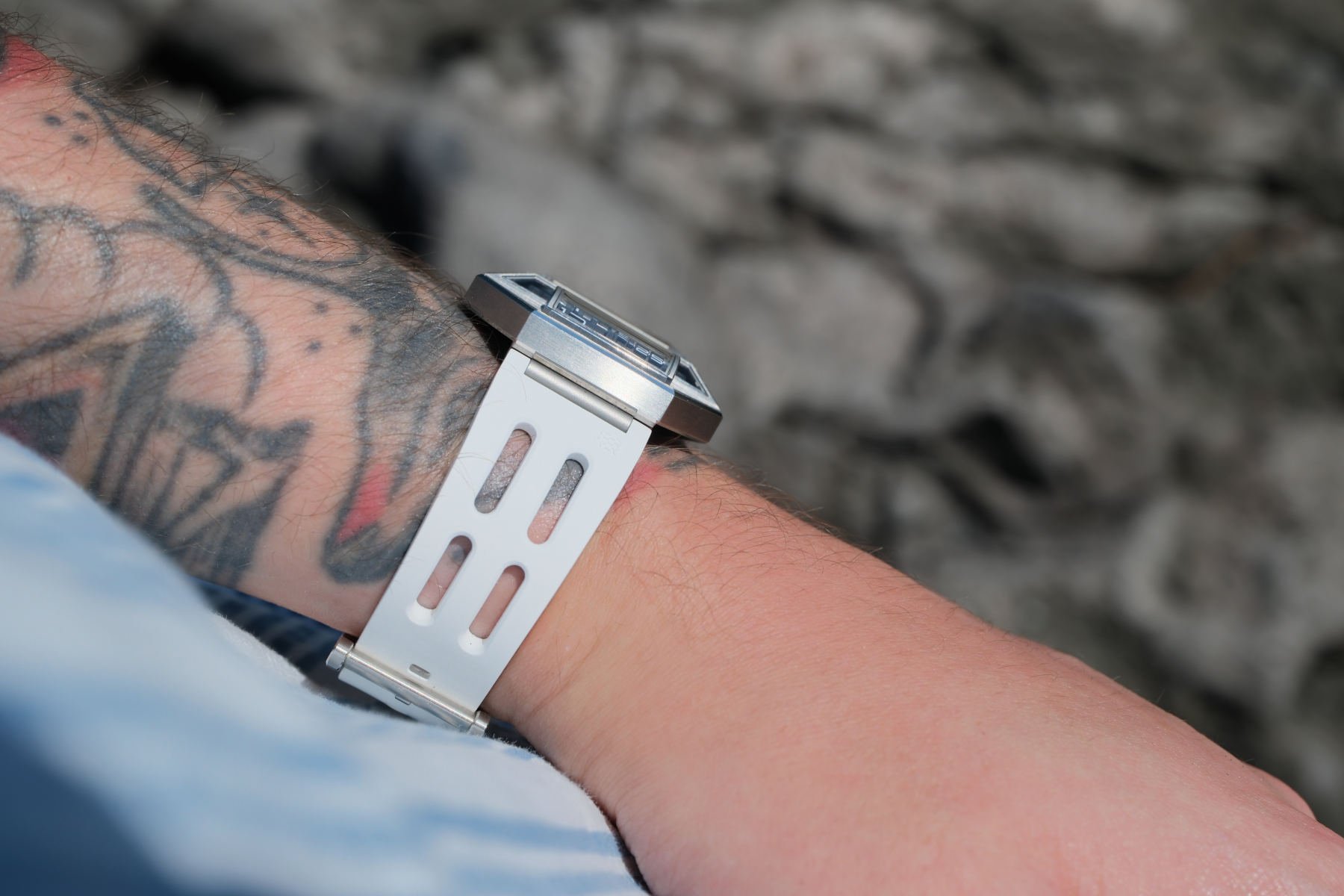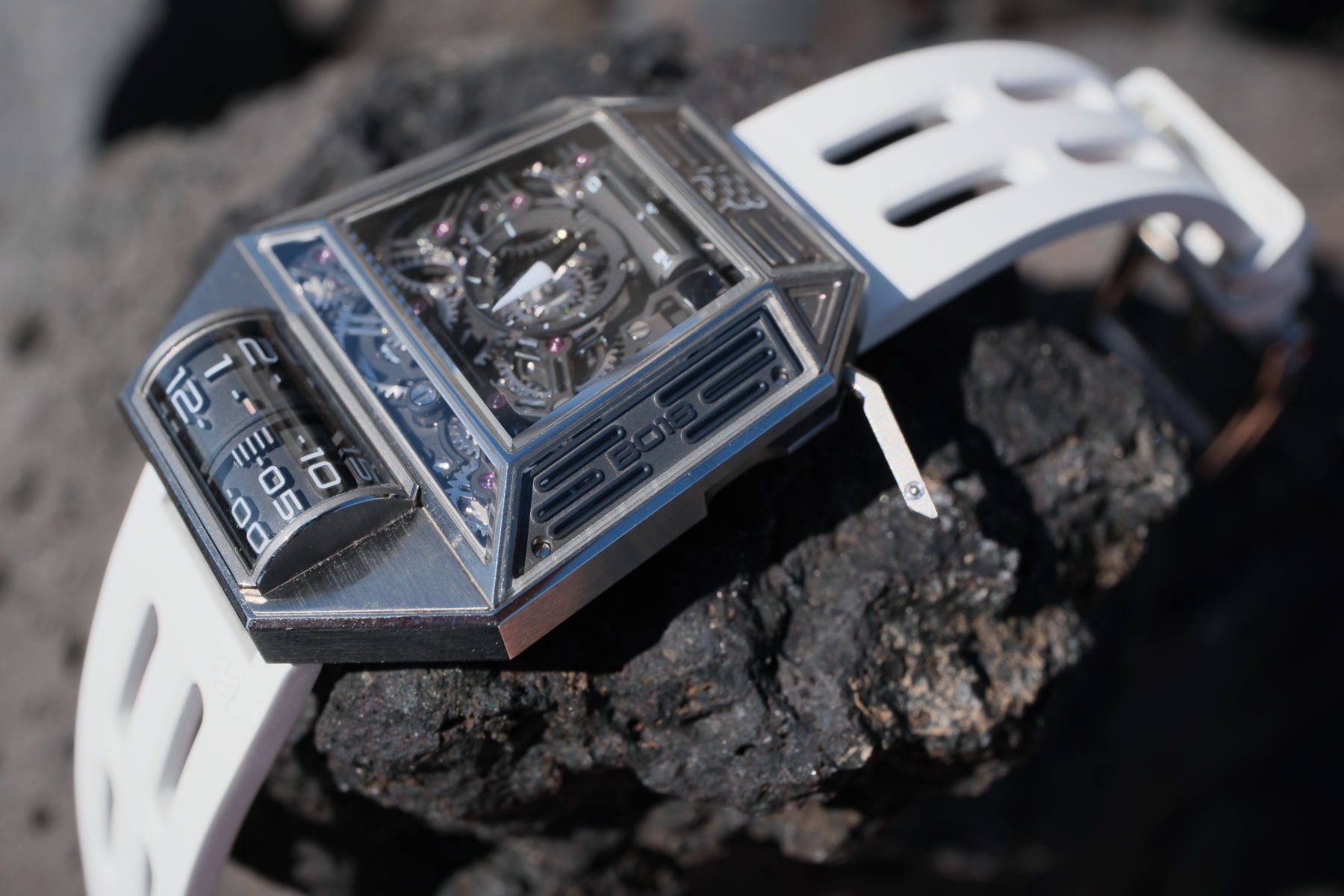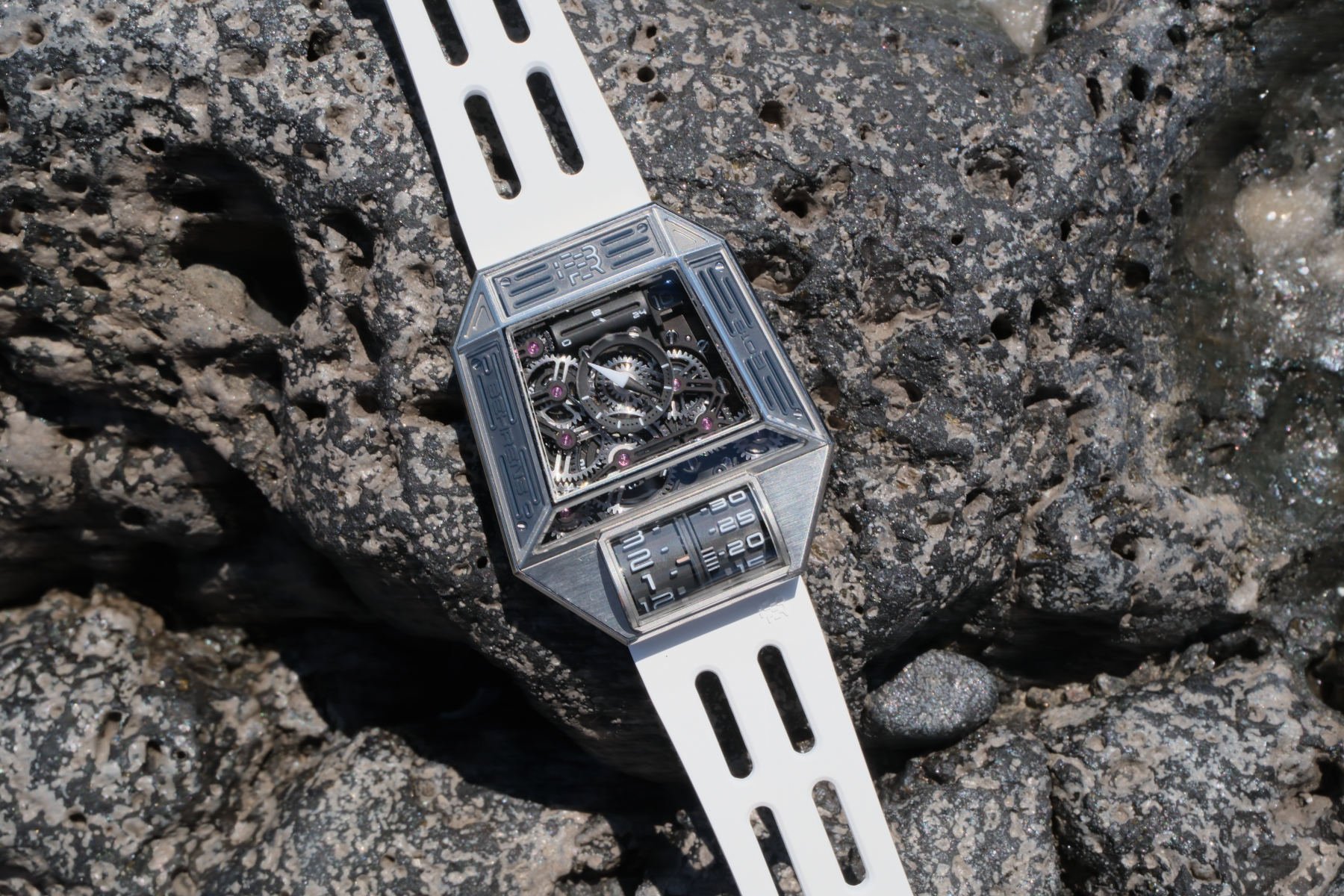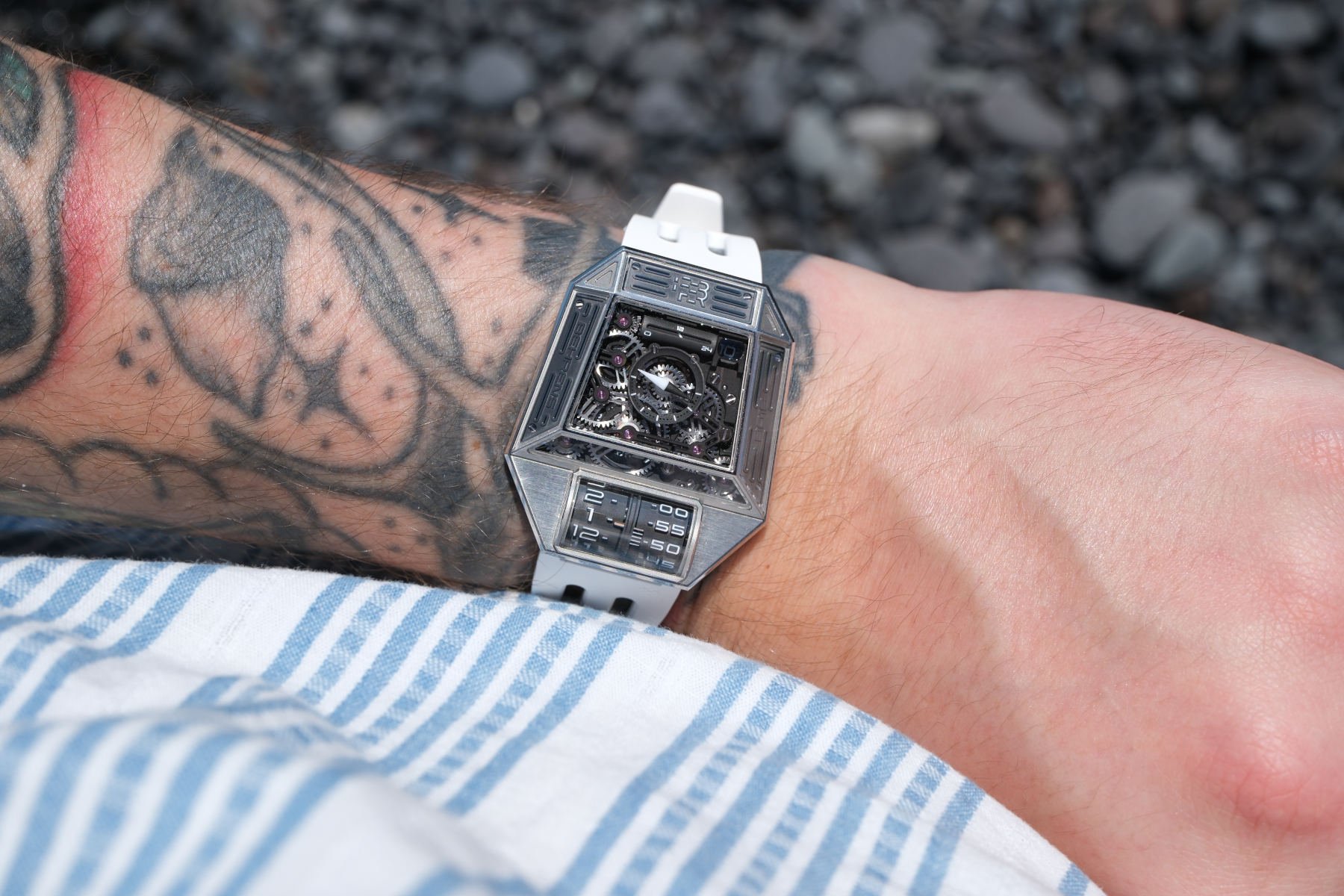Going Hands-On With The Futuristic Behrens Orion One
OK, I’m possibly a little late to the party on this launch. Behrens released the Orion One on January 1st — it was a nice little treat to start the new year! But here we are in November, and this may (or may not) be the first time you’ve properly read about it. I briefly mentioned it in a previous article, but it has taken me until now to get my hands on one and dig into it more deeply. The 2024 GPHG-nominated Orion One is a bit of an oddball and, indeed, not your average watch. Featuring a very non-traditional case and time display, it’s a watch that deserves a closer look to see what’s going on and what I make of it.
I hope many of you are somewhat familiar with Behrens. Over the last year or two, I have written about and reviewed several of the brand’s watches. Behrens proudly hails from China and has been slowly building quite a reputation for its modern, space-themed watch designs, all at very aggressive prices — for example, the ultrathin and ultralight 20G, which I reviewed earlier this year. Over the last month or two, I’ve seen this model begin to crop up a lot on social media as deliveries are making their way into the hands of seasoned collectors.
The Orion One is a futuristic oddball…in a good way!
When I first saw the Orion One renderings at the time of launch, two things struck me right away. First, the open “dial” showing off the gear train, coupled with the roller-style display was pretty darn cool. My fascination with mechanical watches and how they work has always led me to a strong preference for skeletonized or open-worked watches. Show me a watch’s guts, and I’m a happy guy.
The second thing was the case shape. The asymmetrical octagon-shaped case was a little jarring initially. I usually steer away from non-traditional-shaped cases. Round and square cases tend to be my comfort zone. Indeed, a case like this is largely a love-it-or-hate-it type of thing. If you’re in the latter camp, then fair enough. The horological heart loves what it loves, and there’s no point in trying to force something otherwise. However, knowing my love for the brand’s recent offerings, I was still intrigued. Having never worn a watch like this before and having been slightly disappointed with an older Behrens release, I was concerned about how the Orion One might feel on the wrist, though.
Behrens learned from a previous mistake
Behrens released a watch called the MARS Project One a few years ago. While that watch was technically impressive and conceptually interesting, it was a bit of a beast and impractical to wear. I saw it in person, and it was large, unwieldy, and not overly comfortable on the wrist. It was understandably less popular at Fratello HQ. Honestly, I was concerned that the Orion One would also end up in this category. Thankfully, Behrens has tirelessly worked to ensure its watches maintain their watchmaking chops while being better proportioned and easy to wear. The 20G and the Kung Fu are perfect examples of this attention to wearability, and thankfully, so is the Orion One.
Inherently easy and fun to wear
I was at Time To Watches in Geneva in April of this year when I first encountered the Orion One in person. On the wrist of Eric So, the brand’s international representative, the watch struck me with its compactness. Having not seen the on-paper dimensions, I was expecting a larger watch. Of course, I asked if I could try it on, and it was at that moment that I began to appreciate just how impressive this watch was. The rest was history, and while I slept on it for a while, I knew I had to add this wacky little oddball to my collection. I took it on holiday with me to Tenerife recently, intending to photograph it against the basaltic volcanic rocks that cover the island. I always felt that the watch looked like some kind of alien artifact that crash-landed many millennia ago, buried and waiting to be discovered. It has an oddly organic yet synthetic shape to it, which makes it look and feel otherworldly — but in a good way!
First, let’s get the raw numbers out of the way. Had I seen these in advance, I may have been less surprised at the compact nature of the Orion One on the wrist. Measuring 38mm at the case’s widest point and 44mm long, this is not a big watch. Its thickest point is at the rollers, measuring “a belt-busting” 12.6mm. That said, the case is just 11mm thick — impressive stuff considering the modular nature of what’s going on inside. Likewise, the complexity of the case really shouldn’t be undersold here. The stainless steel case features over 40 facets with varying finishing styles and six sapphire windows. Polished bevels highlight the core brushed surfaces, with blasted matte recessed sections in the upper-left and upper-right corners.
It’s all happening on the Orion One dial
The series of gears and wheels that power and control the different display elements of the Orion One are the focus of the dial. In the center, you’ll spot the sub-dial for running seconds and a linear 24-hour indicator above it. Finally, there’s a date window tucked away in the top-right corner. All of this spreads across the width and length of the case, filling out the entire shape. Therefore, you might assume this to be an in-house movement. However, rather impressively, Behrens built a custom module for the Orion one, which runs off of a Sellita SW200 automatic movement. That’s right, under the extraterrestrial exterior lies a regular Sellita movement running the show. As mentioned above, with its modular movement, the watch is impressively slim.
The lower portion of the watch comprises the roller system used to display the hours and minutes. This allows for a semi-digital readout of the time. In the center, where the two rollers meet, you’ll notice dashes indicating the exact position of the current time. A jump-hour feature would have been great and allowed for slightly improved legibility, but it can’t be expected at this watch’s sub-$4K price. You’ll notice five dashed markers on the center’s right-hand side. These allow you to read the exact minute. So, in the picture below, the time reads 13:07. As a side note, it is possible to set the time backward and forward using the hidden crown on the top-right-hand corner of the case.
The secret crown
What’s that? You didn’t spot the crown? Most people don’t. Honestly, I didn’t notice a missing crown the first time I saw an image of this watch. It wasn’t until Eric pointed out the hidden crown to me that I realized. The recessed, level crown makes the case’s shape sharp, symmetrical, and uninterrupted. You flip it out to operate, and then it essentially works like a regular crown. You wind the movement in the first position, then set the date in the second. Finally, you set the time in the third position. I’ll admit that the operation is a little more complex in reality. The crown is more fiddly to turn than a regular crown. There’s a knack, but it’s relatively easy and quick to get the hang of it.
The supplied FKM rubber straps use a proprietary attachment system. It’s a quick-change mechanism, but being proprietary, you’re limited to the options available directly from Behrens. If you prefer a black or white rubber strap, you’re in luck! If you’re hoping for other colors or materials, you’re sadly out of luck. In my opinion, the white rubber is the option here. That’s fortunate as I do not have a black rubber strap to show you on this watch, but trust me. The FKM rubber also means this strap is incredibly comfortable on the wrist. Vents in the rubber allow for additional breathability, thus helping to reduce the dreaded sweaty wrists in hot weather.
Very impressive in hand and on the wrist!
The Behrens Orion One is a visual oddball. There’s no getting past that. It’s certainly not a watch for the traditionalists. But that’s precisely what I like about it and Behrens in general. With many choices for three-hand tool watches, the world needs watches that eschew tradition and go a different way. And that’s where the Orion One slots in. Behrens has done a great job shaping the case and tweaking the dimensions to produce a very compact and wearable watch. It sits nicely under a shirt sleeve, but while you “could” wear this with a suit or shirt, it’s a watch that works better in a more casual setting. These days, the rule book is somewhat obsolete, and you can wear any watch with any attire, but the more futuristic aesthetic of the Orion One suits casual best, at least in my opinion.
It’s no secret that I am a big fan of Behrens, and I don’t seem to be alone here among the Fratello community. I realize these designs are not for everybody, but they’re not meant to be. For those of us looking for something a little bit different and offering a lot of watchmaking for the money, Behrens delivers in spades. The Orion One, with its innovative roller time display and open-worked dial, is no exception. It never fails to generate interest and positive impressions among other watch collectors I meet.
The Behrens Orion One is a non-limited model and is available now for US$3,600. What do you think of this watch? Be sure to let me know in the comments!


